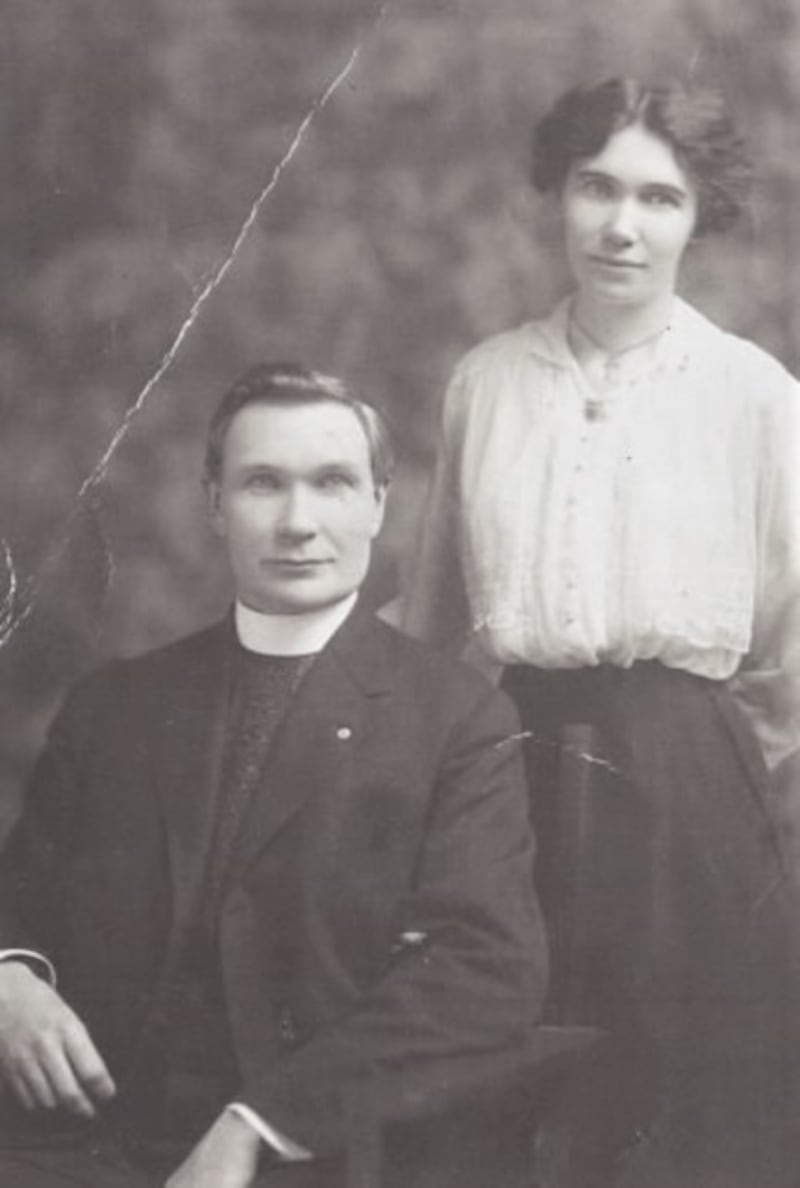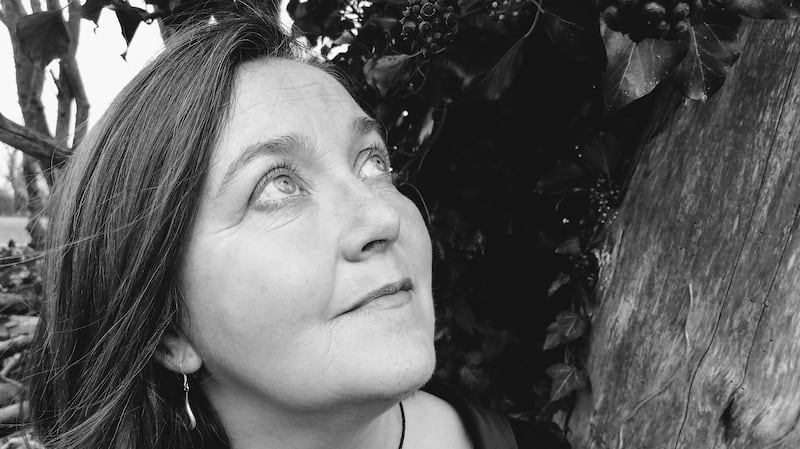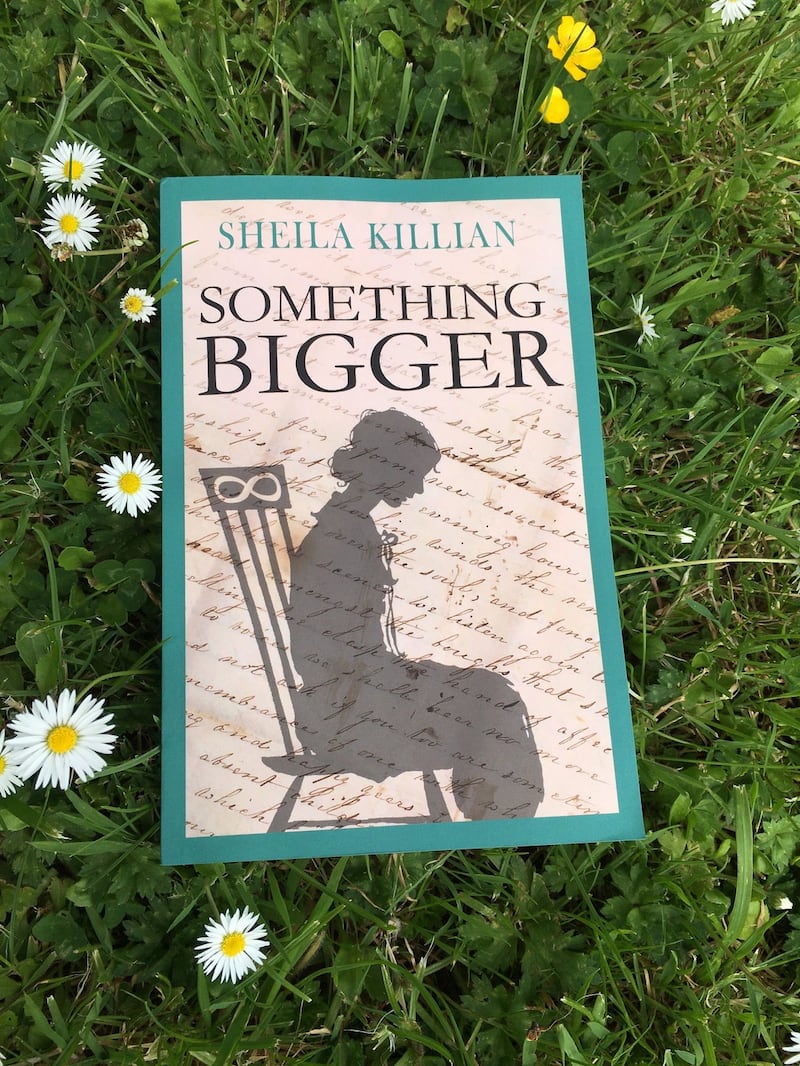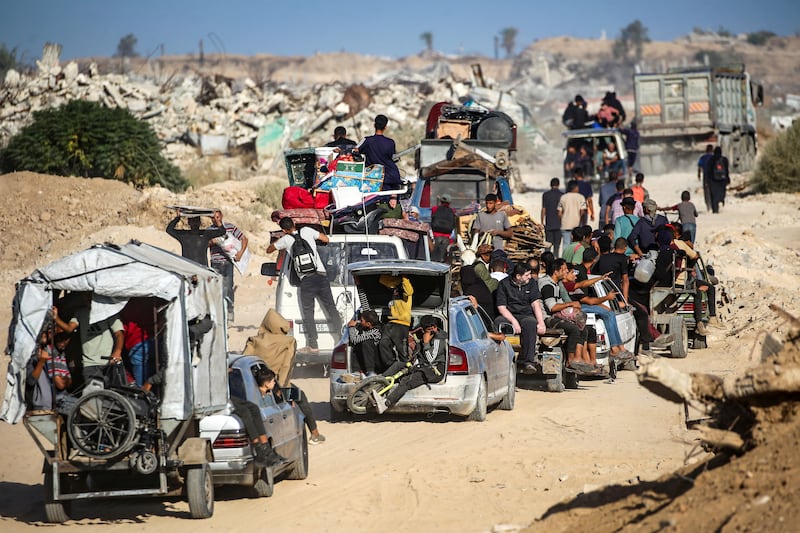Something Bigger, as a novel, was saved by a porch in Alabama. It tells the story of Marcella Coyle, who leaves home in Roscommon in 1904 to join her older brother Jimmy, an outspoken priest, in Birmingham, Alabama.
She’s only 14 then, and this city is a hectic crucible of money and power. Fortunes are there to be won or lost, with race and class used as means to that end. Jimmy swins against that tide, wordy, impatient, ambitious, naturally inclined towards human rights. Let’s face it, they were always going to get in trouble in a city like that.
The thing is, Marcella, in real life, was my grandaunt, and Jimmy my granduncle. Despite the gap of more than 100 years from the main action of the novel to the present day, I knew Marcella in her old age. She moved in with us when I was a baby, staying for more than a decade. By then she had become a Southern lady with a slow drawl and creamy blue eyes, confined mostly to bed in our front room.
She was the spice in our childhood, this American almost-grandmother that we knew as Auntie Siss. For us, she was Brer Rabbit stories, sips of stolen sherry, jelly sweets and too much salt. She was hairnet and dentures, always in bed, impossibly old, with a sea-trunk of oddments from this place called Alabama in the corner of her room. If we were good, she’d let us open it and ruffle past the folded lace, the mirrors and trinkets, the rabbit-fur stole with paws on both ends, to find her cardboard chocolate box of press cuttings from 1921, the year her brother was killed.

She had lots of pictures of him, but he looked the same in them all: thick curly hair and eerily pale eyes, that stared straight at you until you put the cardboard lid back on. The most important thing about him, for us as kids, was that he was dead: shot on purpose by the Ku Klux Klan which was American for Very Bad Men. In her story, and we only had her story, he died on the porch, where he’d been reading his breviary.
We pictured a porch, long and wooden. We pictured the sort of reliable sunlight that might make a porch possible. We slanted the sun’s rays for evening, and pictured the good-looking Irish priest with the strange eyes looking up from his Divine Office to find Very Bad Men coming up the porch steps with guns. We pictured him dead: head back with a look of surprised piety, his breviary open and fluttering at his feet, the rocking chair still creaking. It was iconic, a vivid movie scene that never left us.
So when I came to write the novel, the porch was central. A Southern porch could be a shelter from rain and sun, with a swing seat where you sit and read, watching people passing on the street. A place for friends to call, for conversation and deceit. And also for violence, because the porch is open, and the street is full of strangers, not all of whom are ready to be your friend.
Fiction based on real events takes a lot of research, and while it’s absorbing and necessary, that research is also dangerous, in a way. There is a maze of detail online about every aspect of life in the early 1900s: the slang that was in use, the modes of travel, the price of entertainment, the music, the life of women. You can read all about the Spanish flu, the state fairs, coal strikes and earthquakes and everything else that happened in Birmingham in the first 20 years of the century, and the trick, it seems, is to absorb it so deeply that it doesn’t all have to appear on the page.

Initially, I was far too focused on accuracy. I love research, but it weighed the story down, early on. It was only when I had the chance to travel to Birmingham, Alabama, and walk the streets that things changed. Sure, there was lots of conventional research to be done there too – I spent days in the state archives, happily spinning through microfiche records – but the real tipping point came on my first night there, again, with the porch.
I arrived in Birmingham late, having got lost on the backroads from Atlanta. It was almost 11pm by the time I checked in to the hotel. Restless after the drive, I set out walking to find the rectory where Jimmy and Marcella had lived. I had the address, and a faded sepia photograph, but a hundred years had passed since it was taken.

Wandering around a strange city on your own at night is not the usual way to find revelation, but honestly, when I stood on the corner of 22nd and 3rd, staring across a low fence at the dark porch with its empty swing seat, every single thing just shifted a little, and fell into a new place.
Marcella came alive, finally young and free of that bed that contained her in my memory. Jimmy and other public figures stepped away from their dry records and began to move on their own. They’re all fictional characters now, even the ones who share names with people who exist in history books.
In the following days, walking around the city, I saw the novel’s characters everywhere, making their entrances and exits on the hot streets. Birmingham became a kind of film set with the porch at its centre. Frank O’Connor said a short story is like a kite – a quick and glorious flight. In some ways a novel based on real events is like that too. To fly, a kite needs to be held down and lifted at the same time. Historical fiction needs the anchor of fact, but the lift of pure imagination. For Something Bigger, that porch became the anchor that allowed the novel to fly.


















